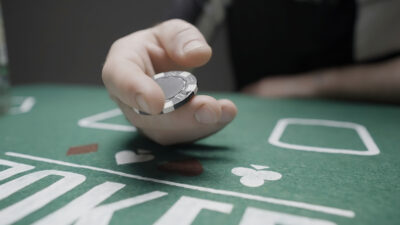Poker isn’t a complicated game. The rules and mechanics are pretty basic, but the nuance runs deep. The origins of poker go back more than a thousand years by some estimates, in large part because of this simple elegance.
We like to get under the hood of games here at Gala, so we’re going to take some time in this series to delve deep into some specific mechanics and ideas that make poker poker.
While it may seem simple from a player-perspective, the “engine” powering poker is amazingly powerful… so that’s a good place to start. The classic deck of playing cards… one of the most useful analogue randomness engines ever created!
The Magic of Playing Cards
The possible combinations of deck order in a 52-card deck is equal to 52!, or 52 factorial. This means 52x51x50x49, etc. Factorial growth can get out of hand very quickly, so 52! is a MASSIVE number.
- There are 1326 different possible combinations of hole cards you can be dealt in Hold ‘Em
- There are 2,598,960 possible combinations the five cards on the table can be in as they are revealed
- There are 9,122,409,676,719,740,029,270,368,190,464,000,000 (9.122 undecillion!) possible combinations for how the entire 23-card board could play out for a game with 9 players.
- There are roughly 8×1067 possible combinations for a deck of cards to be shuffled in – that’s roughly 80 unvigintillion!
Let’s use an analogy to illustrate the above… after all, 80 unvigintillion is more atoms than are in the entire Earth… or more molecules in the entire universe! We could use a better way to visualize it.
Let’s say hypothetically that every solar system in the universe has 100 planets on average (crowded, right?). Each of these planets has 100 billion people on them, and there’s 1 million solar systems in each of 1 billion galaxies across the universe. Every person on each of those planets has 1000 decks of cards that they shuffle 1000 times every single second since the beginning of the universe.
On average, each of those 10 octillion people (1028) shuffling cards will NEVER have shuffled to the same deck setup twice in the ~ 436,117,077,000,000,000 seconds since the universe began. In fact, they’d be way off.
All those people would’ve theoretically explored around 4×1051 possible combinations (4 sexdecillion). They would need to repeat the entire experiment around 20 quadrillion times (2×1016) before they had enough repetitions to even possibly cover all combinations. Unfortunately, that’s probably long after the heat death of the universe.
Fifty Two Cards
The standard deck of playing cards has 52 cards – 13 of each suit: 2-10, jack, queen, king and ace. For our purposes we will ignore joker cards, as they are a non-standard addition to the deck and aren’t used in many games.
Playing cards themselves have unclear origins, but it’s widely thought that they began to emerge as dominoes in the 10th century in China. The classic tiles were eventually replaced by more decorative paper cards, which people crafted games around. The silk road spread the cards first to India and Persia, eventually winding all the way across to the far edges of Africa and Europe.
It’s important to note that these weren’t deck of cards as we know them, and there was no standardization for what was a playing card deck. People simply played games made for the cards they had access to. They’d adapt existing games to their deck or make new ones. Since gaming often happened in small communities or families, this was perfect at the time.
In the 16th century in Europe what we think of as a standardized deck began to surface. First there were many different decks, but popularity began to focus on a 52-card deck with four suits created in France – largely resembling the one we still use. Spurred by the spreading of coffee houses across the continent, standard decks were massively helpful as gaming left the home and often found its way to a cafe table.
Poker and the Standard Deck
Poker also has an unclear origin, but we do know that it began to gain popularity in the 19th century. There were lots of different rules and games, but many of them were designed around the most popular type of deck at that time… that’s right, the 13×4, 52-card standard!
The rest is all about industrialization creating worldwide standardization. On June 28th, 1881, the Russell, Morgan, and Co. printing company manufactured their first 52-card deck featuring a familiar design on the back with filigree embellishments and two bicycles. The company would rebrand their company name to the popular name of their Bicycle line of cards before long.
https://bicyclecards.com/history
It was their printing that popularized the inclusion of two jokers and two advertising cards (later one would be swapped out for a rules card).
This pretty much brings us to where we are today, with the amazing 52-card analogue game engine that is a deck of cards being spread the world over.
Thinking Cards
It’s easy to forget in these days of digital calculation and instant algorithmic analysis that we were very clever for millennia before computers. There are tons of games that use the 52-card deck of playing cards, and it’s not hard to see why.
Playing cards ensure fairness and pure randomization across a wide variety of game mechanics. Not only are they so amazingly random, but every card looks the same. This creates the opportunity to make games with incomplete information mechanics that don’t sacrifice any of the power of randomization.
In the future, we’ll dive into more poker-specific topics in this series. Still, the groundwork we’ve discussed here today is important, because poker would not be what it is without the classic deck of cards. In fact, we’d go so far as to say that no games would be what they are without our history in playing cards. Humans have been playing games for countless eons, but the deck of cards may be our crowning achievement in it… even if it is one of the most simple and elegant.
Tune in for more deep dives coming up as we get beneath the cards into the nuances of poker mechanics and keep Thinking Poker!





